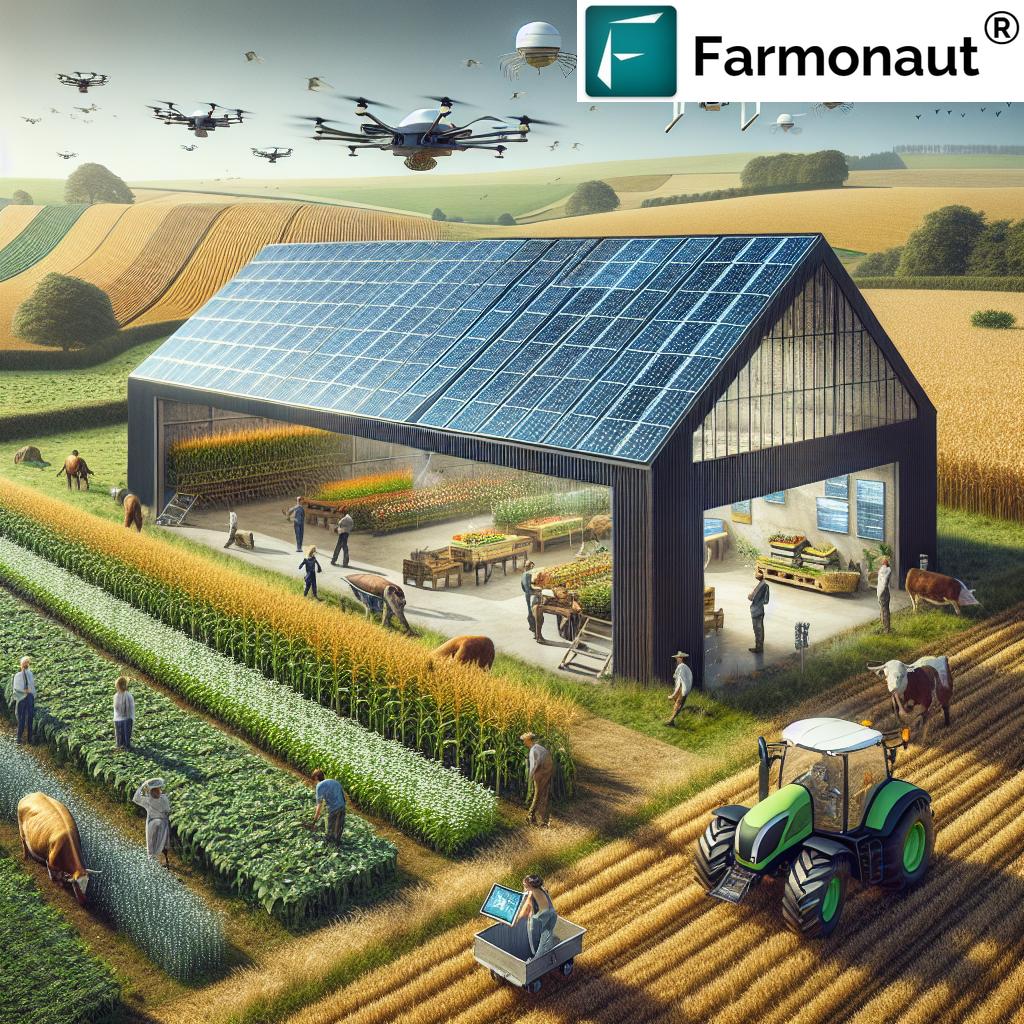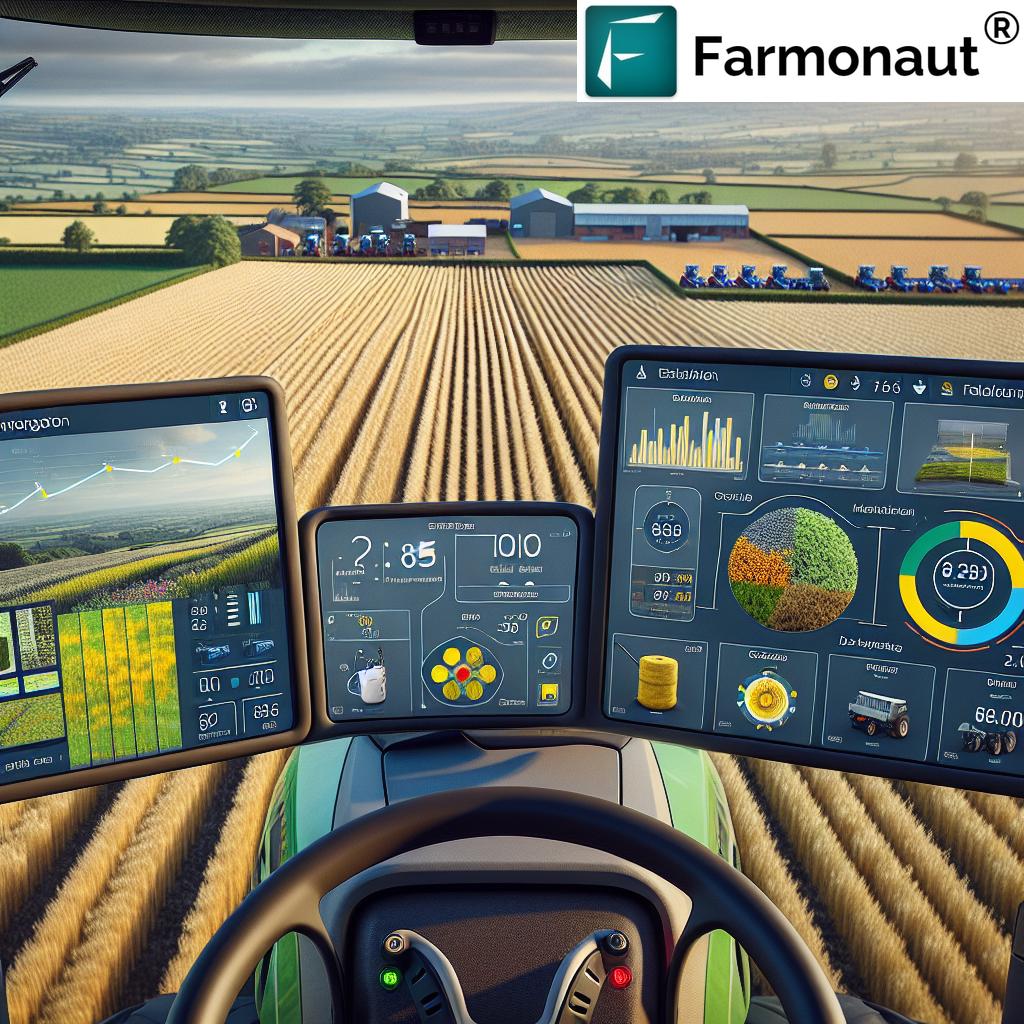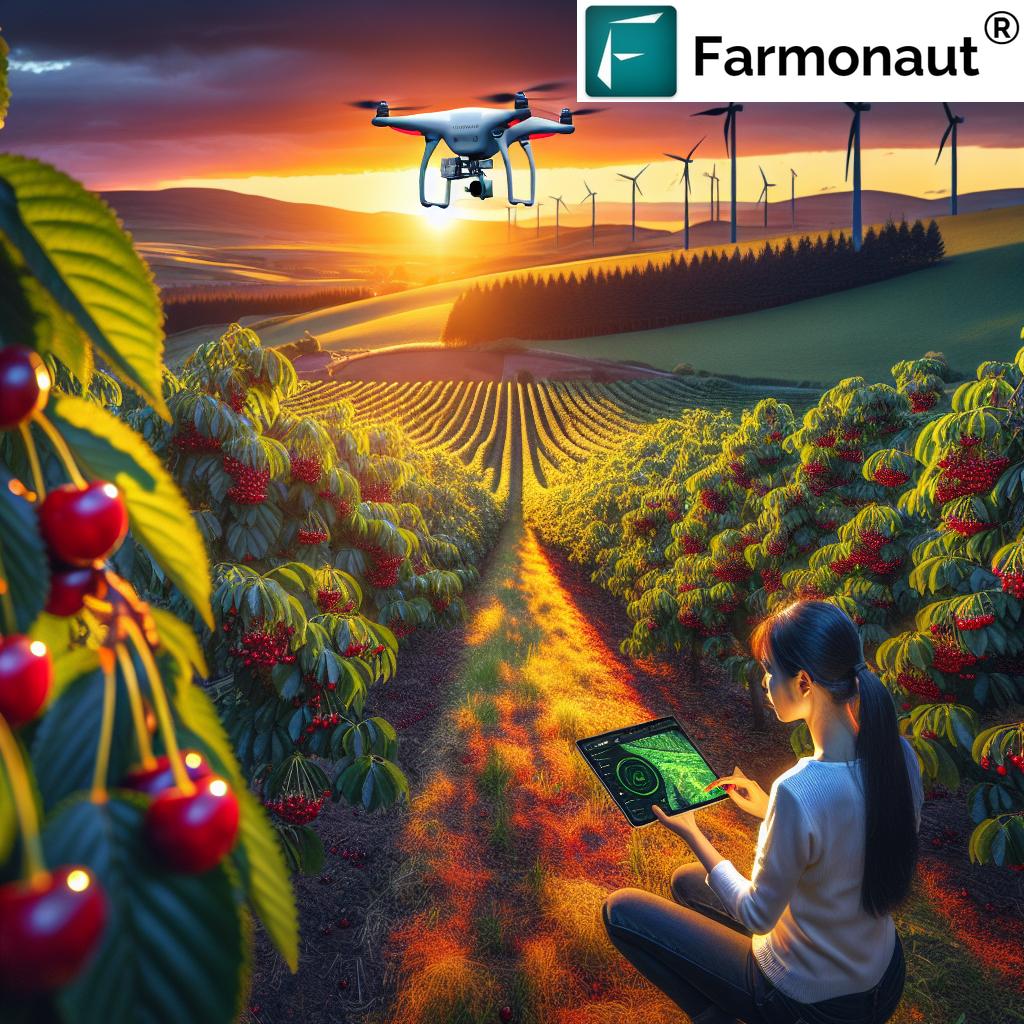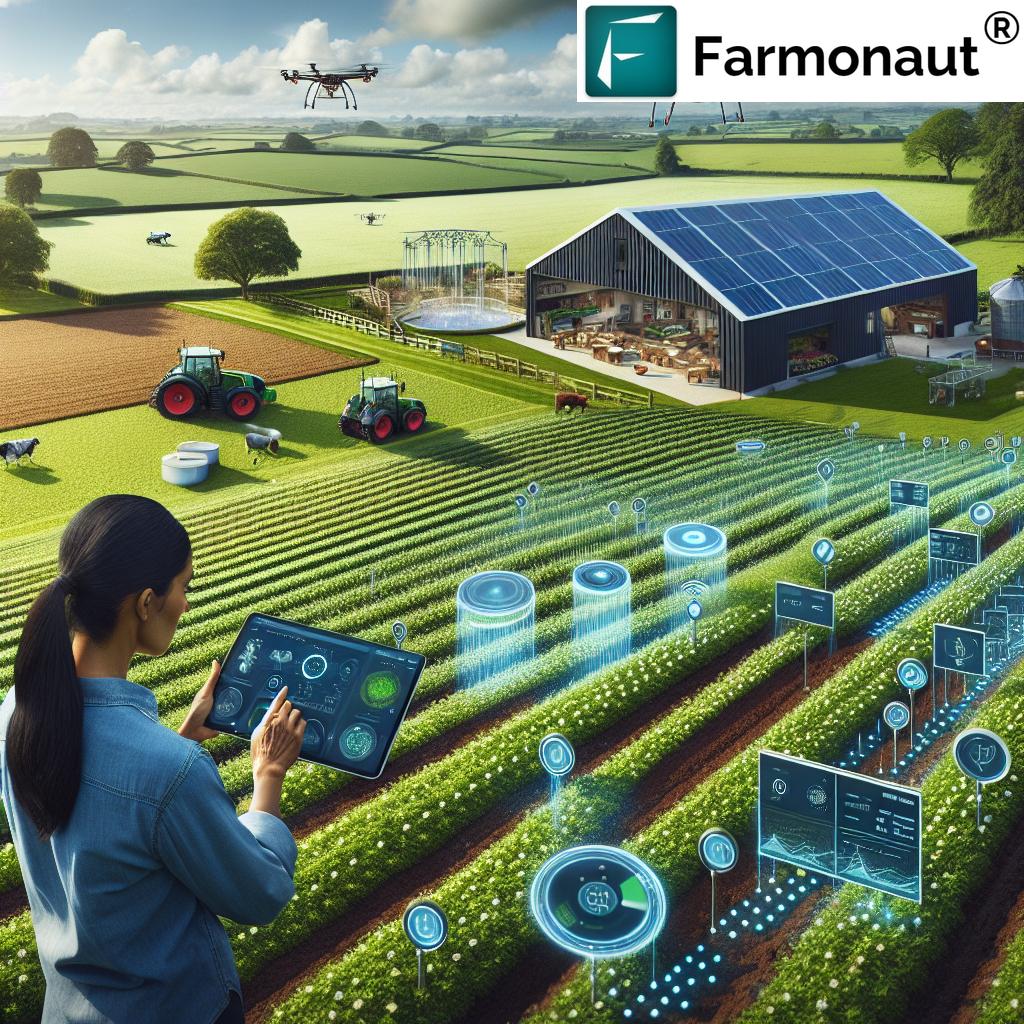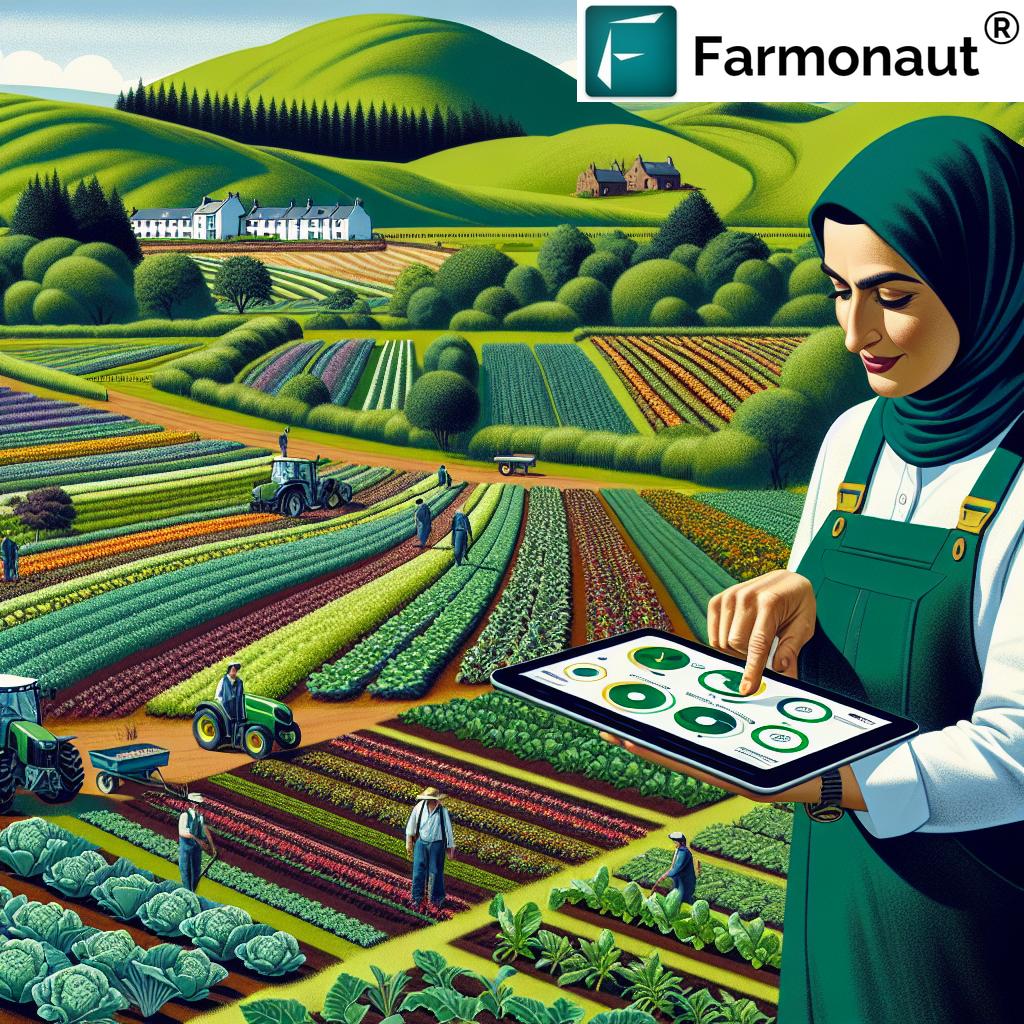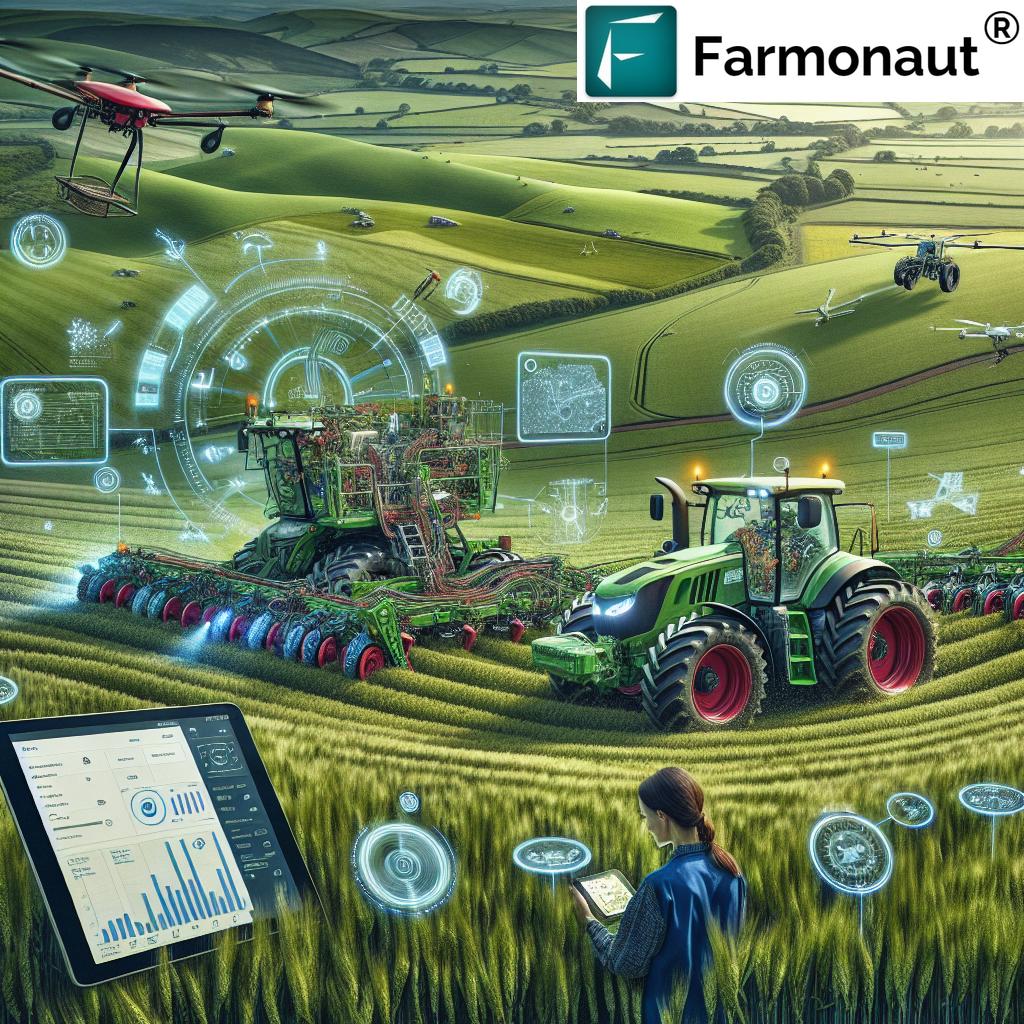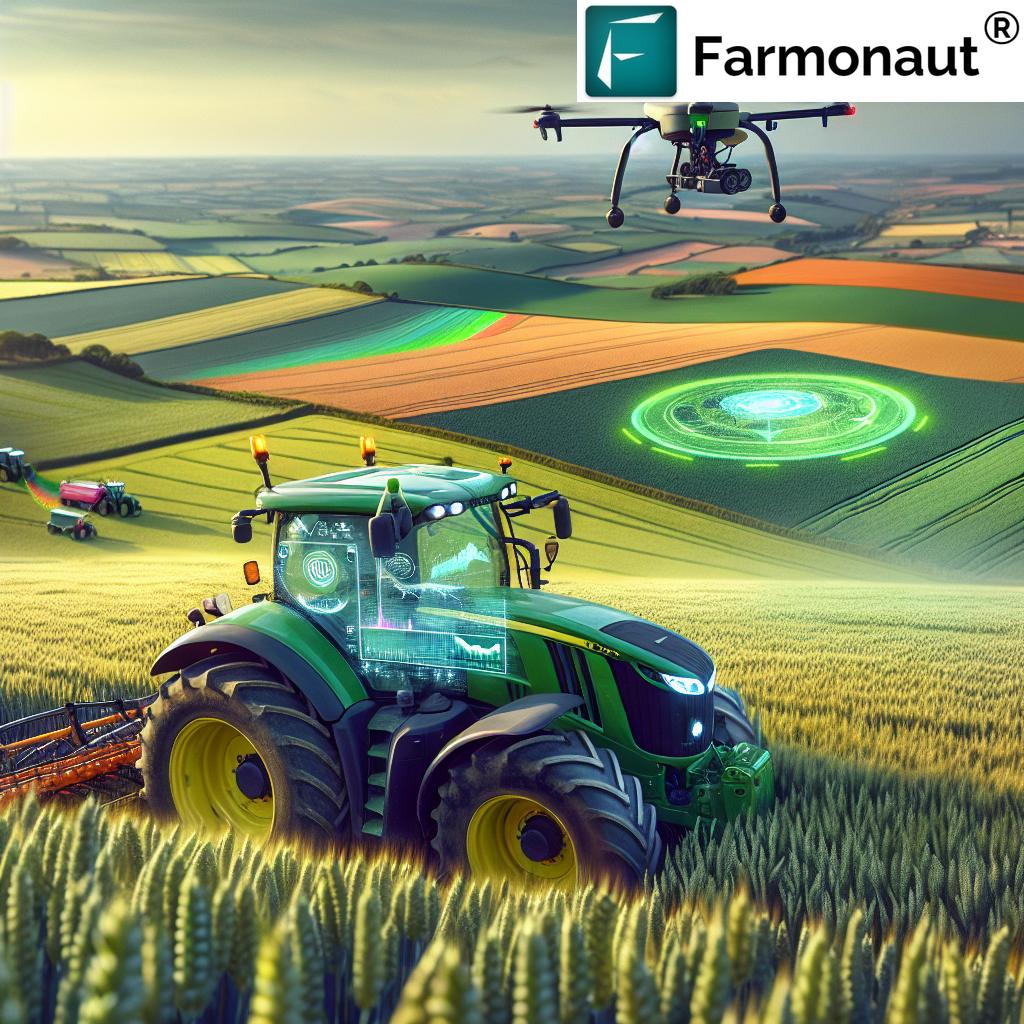Sustainable Innovation: Scotland’s First Tea Plantation Revolutionizes Local Gastronomy
“Scotland’s first tea plantation, located on Loch Fyne’s shores, introduces a unique culinary offering to the country’s gastronomy scene.”
In the land of whisky and haggis, a new culinary revolution is brewing. Scotland, known for its rugged landscapes and traditional farming practices, is now home to an innovative agricultural venture that’s set to transform the country’s gastronomic scene. We’re excited to explore the groundbreaking Scottish tea plantation that has taken root on the picturesque shores of Loch Fyne, marking a significant milestone in Scotland’s journey towards sustainable agriculture and culinary excellence.
This pioneering initiative, backed by a renowned local restaurant, is not just about introducing a new crop to Scottish soil. It’s a testament to the country’s commitment to agricultural diversification and sustainable gastronomy. As we delve into this fascinating project, we’ll uncover how it aligns with current Scottish culinary trends, promotes local food sourcing, and showcases the potential for tea cultivation in Scotland’s unique climate.
The Birth of Scotland’s First Tea Plantation
Nestled along the shores of Loch Fyne, amidst the rolling hills and misty glens, lies a sight that would have been unimaginable just a few years ago: rows of carefully tended tea plants, their glossy leaves drinking in the Scottish humidity. This is Scotland’s first tea plantation, a bold venture that challenges traditional notions of what can be grown in this northern climate.
The idea for this innovative project was born from a collaboration between forward-thinking farmers and the visionary team behind Inver, a Michelin green star restaurant known for its commitment to sustainability and local sourcing. Recognizing the potential of Scotland’s high-humidity climate for tea cultivation, they set out to create a uniquely Scottish terroir for this globally beloved beverage.
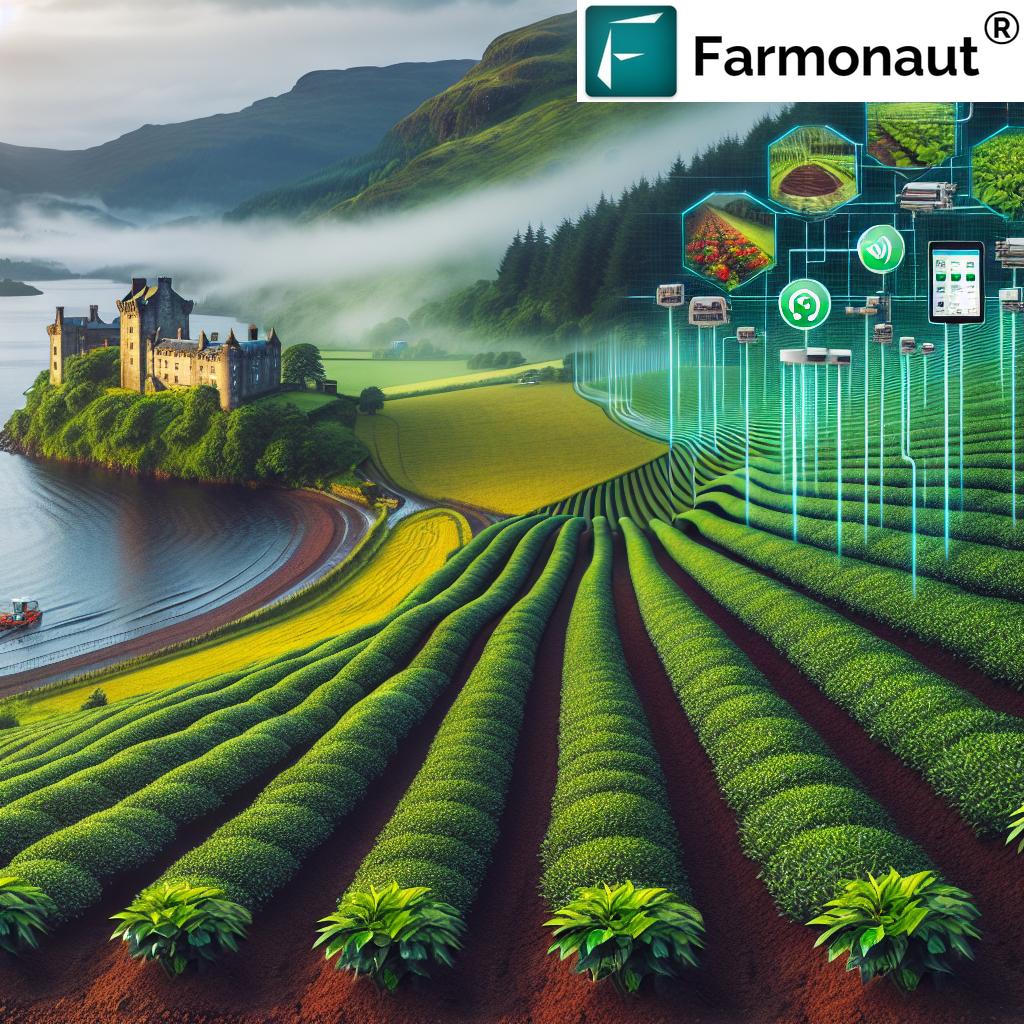
Embracing Sustainable Agriculture in Scotland
The Scottish tea plantation is more than just a novel agricultural experiment; it’s a shining example of sustainable agriculture in Scotland. By utilizing innovative farming techniques and embracing the principles of agroecology, this project demonstrates how Scottish farmers can diversify their crops while minimizing environmental impact.
- Water Conservation: The plantation employs advanced irrigation systems that make efficient use of Scotland’s abundant rainfall, reducing the need for additional water resources.
- Biodiversity Promotion: The tea plants are interspersed with native Scottish flora, creating a diverse ecosystem that supports local wildlife and pollinators.
- Soil Health: Organic farming practices and minimal tillage help maintain and improve soil quality, ensuring long-term sustainability of the land.
This approach to sustainable agriculture aligns perfectly with Scotland’s broader goals for environmental conservation and responsible land use. It serves as a model for how traditional Scottish farming can evolve to meet the challenges of the 21st century.
The Role of Technology in Modern Agriculture
In the realm of innovative farming techniques, technology plays a crucial role. This is where Farmonaut’s advanced satellite-based farm management solutions come into play. By leveraging cutting-edge technology, farmers can optimize their operations and make data-driven decisions.
Farmonaut’s platform offers several key benefits for projects like the Scottish tea plantation:
- Real-time crop health monitoring using satellite imagery
- AI-based advisory systems for optimized farm management
- Precise resource management tools to enhance sustainability
- Blockchain-based traceability for transparency in the supply chain
These technological advancements are essential for pioneering agricultural projects, enabling farmers to adapt to new crops and cultivation methods with greater confidence and efficiency.
Explore Farmonaut’s innovative solutions:
Scottish Culinary Trends and Local Food Sourcing
The Scottish tea plantation is not just an agricultural innovation; it’s a reflection of evolving Scottish culinary trends. In recent years, there has been a growing emphasis on local food sourcing and farm-to-table dining experiences across Scotland. This trend has been driven by both chefs and consumers who are increasingly conscious of food provenance and environmental impact.
The plantation’s first tea blend, crafted to capture the essence of Scottish terroir, is set to make its debut on the menu of a Michelin green star restaurant. This prestigious recognition highlights the intersection of innovative farming and fine dining, showcasing how sustainable agriculture can elevate culinary experiences.
“The Scottish tea plantation’s first blend will be featured on the menu of a Michelin green star restaurant, showcasing innovative farming in fine dining.”
The Unique Scottish Terroir
What makes Scottish tea unique? It’s all about the terroir – the environmental factors that influence the flavor and characteristics of the tea. Scotland’s distinct climate, with its cool temperatures, high humidity, and mineral-rich soil, imparts a unique flavor profile to the tea leaves.
- Climate Impact: The cool Scottish climate results in slower growth, allowing the tea leaves to develop more complex flavors.
- Soil Influence: The mineral-rich Scottish soil contributes to the tea’s distinctive taste and potential health benefits.
- Coastal Notes: Proximity to Loch Fyne may impart subtle briny notes, creating a truly unique flavor profile.
This distinctive Scottish terroir creates a tea that is unlike any other in the world, offering a new experience for tea connoisseurs and food enthusiasts alike.
Agricultural Diversification in Scotland
The Scottish tea plantation represents a significant step in agricultural diversification for the country. Traditionally, Scottish farming has been dominated by livestock, particularly cattle and sheep, along with arable crops like barley and wheat. However, changing climate conditions and economic pressures have prompted farmers to explore new avenues.
Agricultural diversification offers several benefits:
- Economic Resilience: By diversifying crops, farmers can reduce their reliance on a single market or product.
- Environmental Sustainability: Different crops can help improve soil health and biodiversity.
- Innovation in Farming: Diversification encourages the adoption of new farming techniques and technologies.
- Rural Development: New crops can create additional employment opportunities and boost rural economies.
The success of the tea plantation could pave the way for other innovative farming ventures across Scotland, encouraging more farmers to explore unconventional crops suited to the changing Scottish climate.
The Impact on Scottish Farming Industry
The introduction of tea cultivation in Scotland has the potential to significantly impact the country’s farming industry. It demonstrates that with innovative thinking and the right techniques, Scottish farmers can adapt to changing market demands and environmental conditions.
Key impacts on the Scottish farming industry include:
- New Skills Development: Farmers and agricultural workers are learning new skills related to tea cultivation and processing.
- Increased Value-Added Products: Scottish-grown tea opens up opportunities for high-value, locally-produced goods.
- Enhanced International Recognition: Success in tea production could boost Scotland’s reputation in the global agricultural market.
- Inspiration for Further Innovation: The tea plantation serves as a model for other farmers considering diversification.
This pioneering project is not just about tea; it’s about reimagining what Scottish agriculture can be in the 21st century.
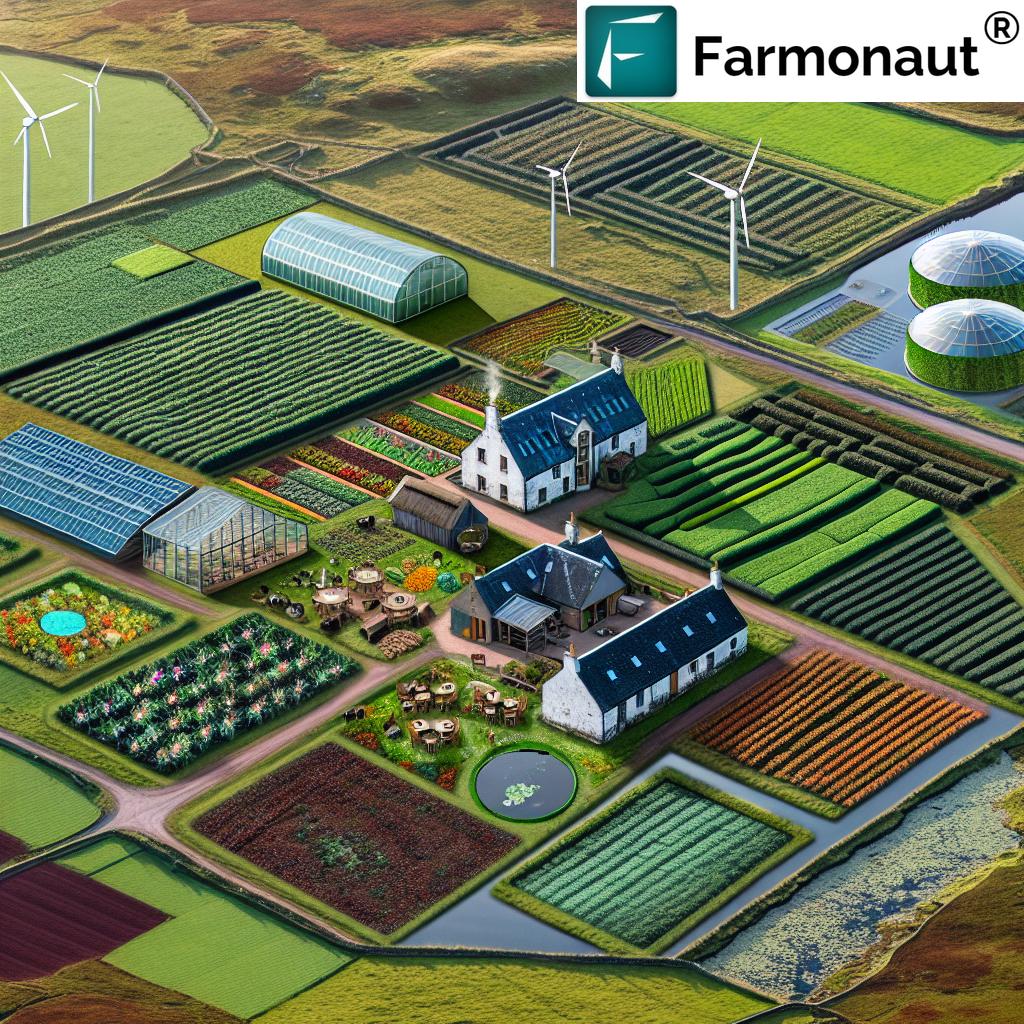
Promoting Agricultural Tourism in Scotland
The Scottish tea plantation is not just a farming venture; it’s also a potential boon for agricultural tourism in Scotland. As interest in food provenance and sustainable farming practices grows, more tourists are seeking out authentic farm experiences.
The tea plantation offers several opportunities for agricultural tourism:
- Guided Tours: Visitors can learn about the tea cultivation process and the unique challenges of growing tea in Scotland.
- Tea Tasting Experiences: Tourists can sample the distinctive Scottish tea and learn about its flavor profile.
- Farm-to-Table Dining: In collaboration with local restaurants, the plantation can offer unique dining experiences featuring Scottish tea.
- Educational Workshops: The plantation can host workshops on sustainable farming practices and agricultural innovation.
By promoting agricultural tourism, the tea plantation not only diversifies its income streams but also contributes to the broader Scottish tourism industry, showcasing the country’s commitment to sustainable and innovative agriculture.
The Role of Technology in Sustainable Farming
In the context of innovative projects like the Scottish tea plantation, the role of technology in sustainable farming cannot be overstated. Advanced technological solutions are crucial for optimizing resource use, monitoring crop health, and ensuring sustainable practices.
Farmonaut’s satellite-based farm management solutions offer valuable tools for such pioneering agricultural ventures:
- Satellite Crop Monitoring: Regular satellite imagery helps farmers track crop health and growth patterns.
- AI-Powered Insights: Advanced algorithms provide personalized recommendations for optimal farm management.
- Weather Forecasting: Accurate local weather predictions help in planning farming activities and protecting crops.
- Resource Management: Tools for efficient water and fertilizer use contribute to sustainable farming practices.
By leveraging these technologies, farmers can make data-driven decisions, improve crop yields, and maintain sustainable practices.
Explore Farmonaut’s API for custom integration:
Comparison: Scottish Tea Plantation vs. Traditional Scottish Agriculture
| Characteristics | Scottish Tea Plantation | Traditional Scottish Agriculture |
|---|---|---|
| Crop Type | Tea (Camellia sinensis) | Barley, wheat, oats, potatoes |
| Climate Suitability | Utilizes high humidity and cool temperatures | Adapted to Scottish climate over centuries |
| Sustainability Practices | Advanced irrigation, biodiversity promotion | Crop rotation, livestock integration |
| Economic Impact | High-value crop, potential for tourism | Stable market, essential for food security |
| Culinary Applications | Gourmet tea, fine dining ingredient | Staple foods, whisky production |
| Tourism Potential | High (unique experience, tastings) | Moderate (farm stays, rural tourism) |
| Technology Integration | High (satellite monitoring, AI advisory) | Moderate (precision agriculture in some farms) |
The Future of Scottish Agriculture
The success of the Scottish tea plantation opens up exciting possibilities for the future of Scottish agriculture. It demonstrates that with innovation, technology, and a willingness to embrace change, Scottish farmers can adapt to new challenges and opportunities.
Potential future developments in Scottish agriculture might include:
- Climate-Adapted Crops: Introduction of more crops suited to Scotland’s changing climate.
- Vertical Farming: Expansion of indoor farming techniques to maximize land use and extend growing seasons.
- Agroforestry: Integration of trees and shrubs into agricultural systems for environmental and economic benefits.
- Precision Agriculture: Wider adoption of technologies like Farmonaut’s solutions for optimized farming practices.
As Scotland continues to innovate in agriculture, it sets an example for sustainable farming practices that could be adopted globally.
The Role of Local Communities
The success of innovative agricultural projects like the Scottish tea plantation relies heavily on the support and involvement of local communities. In this case, the community around Loch Fyne has played a crucial role in embracing and supporting this novel venture.
Community involvement has manifested in several ways:
- Local Employment: The plantation provides new job opportunities for local residents.
- Knowledge Sharing: Local farmers and gardeners contribute their expertise on Scottish growing conditions.
- Cultural Integration: The community has embraced tea as part of the local culinary heritage.
- Educational Initiatives: Schools and community groups participate in educational programs about sustainable agriculture.
This community engagement ensures that the benefits of the tea plantation extend beyond its boundaries, contributing to the overall social and economic fabric of the region.
Environmental Conservation and Biodiversity
One of the key aspects of the Scottish tea plantation is its commitment to environmental conservation and biodiversity enhancement. This aligns with Scotland’s broader goals for sustainable land use and ecological preservation.
The plantation implements several conservation measures:
- Native Plant Integration: Incorporating native Scottish plants alongside tea bushes to support local ecosystems.
- Wildlife Corridors: Creating pathways for local fauna to move freely through the plantation.
- Organic Pest Control: Using natural methods to manage pests, reducing reliance on chemical pesticides.
- Water Management: Implementing systems to prevent runoff and protect nearby water bodies, including Loch Fyne.
These practices not only benefit the local ecosystem but also contribute to the unique terroir of the Scottish tea, enhancing its distinctive qualities.
International Recognition and Market Potential
As news of Scotland’s first tea plantation spreads, it’s garnering international attention. The unique story of Scottish-grown tea, combined with the country’s reputation for quality produce, creates significant market potential.
Key aspects of international recognition include:
- Gourmet Food Markets: Scottish tea as a premium product in high-end food stores worldwide.
- Culinary Tourism: International food enthusiasts visiting Scotland specifically to experience the tea plantation.
- Agricultural Innovation Spotlight: The plantation serving as a case study for agricultural adaptation in changing climates.
- Export Opportunities: Potential for Scottish tea to become a significant export product, alongside whisky and salmon.
This international recognition not only benefits the tea plantation but also enhances Scotland’s reputation as a hub for innovative and sustainable agriculture.
The Importance of Collaboration in Agricultural Innovation
The success of the Scottish tea plantation underscores the importance of collaboration in driving agricultural innovation. This project brings together diverse stakeholders, each contributing unique expertise and resources.
Key collaborations include:
- Farmers and Agronomists: Combining traditional farming knowledge with specialized tea cultivation expertise.
- Chefs and Food Scientists: Working together to develop unique culinary applications for Scottish tea.
- Technology Providers: Companies like Farmonaut offering advanced tools for precision agriculture.
- Environmental Scientists: Ensuring the plantation’s practices align with conservation goals.
This collaborative approach not only enhances the chances of success for the tea plantation but also creates a model for future agricultural innovations in Scotland and beyond.
Embracing Technology for Sustainable Farming
In the context of innovative projects like the Scottish tea plantation, embracing technology is crucial for ensuring sustainability and efficiency. Farmonaut’s satellite-based solutions offer valuable tools for modern farmers looking to optimize their operations.
Key technological applications include:
- Crop Health Monitoring: Using satellite imagery to track the health and growth of tea plants.
- Resource Optimization: AI-powered recommendations for efficient use of water and fertilizers.
- Weather Forecasting: Accurate local weather predictions to protect crops and plan activities.
- Traceability: Blockchain-based systems to ensure transparency in the tea supply chain.
By leveraging these technologies, the Scottish tea plantation can maintain sustainable practices while maximizing productivity and quality.
Conclusion: A New Chapter in Scottish Agriculture
The establishment of Scotland’s first tea plantation on the shores of Loch Fyne marks a significant milestone in the country’s agricultural history. This innovative venture not only introduces a new crop to Scottish soil but also showcases the potential for sustainable agriculture in unexpected places.
By embracing innovative farming techniques, leveraging advanced technologies, and collaborating across various sectors, Scotland is writing a new chapter in its agricultural story. The success of this tea plantation could pave the way for further diversification and innovation in Scottish farming, contributing to a more resilient and sustainable agricultural sector.
As we look to the future, it’s clear that projects like this Scottish tea plantation, supported by cutting-edge technologies and sustainable practices, will play a crucial role in shaping the future of agriculture not just in Scotland, but around the world.
FAQs
- Q: How does Scotland’s climate support tea cultivation?
A: Scotland’s high humidity and cool temperatures, particularly around Loch Fyne, create suitable conditions for tea plants, allowing for slow growth that enhances flavor complexity. - Q: What makes Scottish tea unique?
A: Scottish tea’s uniqueness comes from its terroir – the combination of local soil, climate, and growing conditions that impart distinctive flavors, potentially including subtle briny notes from the nearby loch. - Q: How does the tea plantation contribute to sustainable agriculture?
A: The plantation employs innovative farming techniques, promotes biodiversity, uses efficient irrigation systems, and integrates with local ecosystems, showcasing sustainable agricultural practices. - Q: What role does technology play in the Scottish tea plantation?
A: Advanced technologies, including Farmonaut’s satellite-based solutions, are used for crop monitoring, resource management, and optimizing farming practices to ensure sustainability and efficiency. - Q: How does this project impact the local community?
A: The tea plantation creates new employment opportunities, promotes agricultural tourism, and engages the community in educational initiatives about sustainable farming practices.






